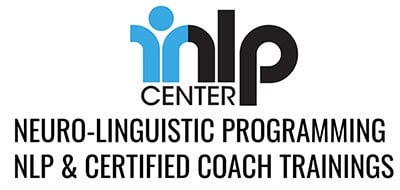In this article, you’re going to learn three fundamental hypnosis techniques people learn when training to become a hypnotherapist.
We’ll cover rapport building, inductions, and regression. We’ll also address common questions and doubts people have when they start learning hypnotherapy.
Let’s dive in with the first technique.
1. Rapport Building
Many practitioners do not understand the importance of rapport. They focus only on learning techniques. But without rapport, there is no hypnosis.
To do any altered state work, the client must feel at ease with both the process and the practitioner.
Hypnosis, aka inner focus, is 100% a matter of choice by the client. If they feel comfortable, they will allow themselves to let go and experience the state. Their minds will not allow them to “let go” if their subconscious has safety concerns.
Imagine this: you’re riding on a train. Your stop isn’t for another hour. And you have the car all to yourself.
You find yourself gazing out the window at the scenery going by. You let your mind wander and drift off into daydream (which is an altered state, by the way).
Then, someone comes into the car and takes you out of your state.
Your focus shifts to the individual. They seem friendly. Safe. But out of all the seats available, they choose the one right behind you.
Can you let yourself drift back into that daydream? Or is your mind now wondering why the person would choose to sit there when they could have sat anywhere? You’re not as calm as you were a few minutes ago, are you?
If that person had struck up a conversation with you, would you have felt a little better? Maybe.
Would you have felt safe enough to allow yourself to drift back into the daydream? Possibly.
But your mind has shifted gears. And it would take more than the train ride you have left to relax enough to access the blissful state you came out of.
When a client comes into your office, you are the shady person in that train car. They will not allow themselves to enter any state until you build rapport. And prove to them that you (and the process) are safe.
For rapport techniques to work, you need to learn and understand things like linguistics and body language. You must know how to read people’s modalities, ask powerful questions, and educate clients.
Those are some of the many ways to build rapport. We teach them all in our hypnosis training at the iNLP Center.

2. Inductions
Induction is a hypnosis technique that helps the client focus inward, ie. go into hypnosis or an altered state. It marks the beginning of an effective hypnosis session.
When done well, inductions relax or bore a client so that their conscious mind steps aside and their subconscious takes over.
Did you know that you experience 95% of your daily existence through the subconscious? Memories, feelings, assumptions, creativity, body language, daydreaming, and habits—all take root in the subconscious.
Take daydreaming, for example. I’m sure you’ve found yourself “lost in thought” or daydreaming a time or two in your life. That experience is the same as a light state of hypnosis.
Think back to a high school class you hated. (Math, anyone?)
Did the topic absorb you? No. You didn’t pay attention. You doodled in your notebook, wished you were still in bed, passed notes to friends, and stared out the window. Why? Because you were bored, your conscious mind stepped aside and let your subconscious entertain you.
That’s what an induction does.
For inductions to work, rapport is essential. Your clients won’t go into hypnosis unless they feel safe.
You also must have the right pace and tone. If you talk too fast, your clients will struggle to experience what you are suggesting to them. If your tone is too grave, loud, soft, or laid back, the client may get distracted.
The last piece is linguistics. You need to know how to match the client’s words, tone, and pitch to help them feel more at ease. A mind likes a mind that is like it. The closer you mirror a client’s communication style, the more comfortable they will be.
3. Regression
This is my absolute favorite hypnosis technique for 100+ reasons. I LOVE regression and the benefits the clients experience as a result of their use of it.
No matter the type of regression—current life regression, past life regression, a spiritual twist with soul exploration, or grief work with life-between-life regression—it’s some of the most empowering work a client will experience.
Of course, the hypnotherapist must know how to help, support, and follow the client.
I’m going to let you in on a secret: EVERY single problem a client comes to you with is a symptom. There’s always something deeper.
There may be a diagnosis underlying the symptom. But hypnosis doesn’t concern itself with diagnoses, only symptoms.
We discuss this in-depth in the Advanced hypnotherapy class at the iNLP Center.
A regression, when done well, takes a client back to the start of a belief system.
Here’s an example: imagine that you had purple-tinted contacts put on you at a very young age. Purple-tinted lenses are a metaphor for your belief system. As time goes on, you forget what life looked like before. You assume everyone sees things the way you do. Everything seems normal. But everything ISN’T normal.
You don’t see real colors. People appear different. The contacts change how you respond to things. As you grow older, you recognize something isn’t working. Others seem to navigate life easier than you can.
Regression means removing the purple-tinted lenses, ie. the negative belief systems, so you CAN see everything as it is.
What’s required for regression techniques to work? I bet you know what I’m going to say…
Yup. Rapport.
The second factor is your ability to get the client in the right state and to time and perform the inductions.
The third is your confidence. You need to KNOW your craft and be confident in your ability to deliver.
The fourth and last is the technique. There are many regression techniques. But if you want to do regression for therapeutic reasons, then belief reframing is the technique I’d recommend mastering.
The version I teach in the Advanced Hypnotherapy course is a blend of 7 techniques. It’s the result of 15 years of trial and error with clients. It’s effective, powerful, empowering, and 100% client-driven.

The Importance of Learning Proper Hypnosis Techniques
Without proper training, the hypnosis techniques we’ve shared won’t work.
You must know how to build rapport, perform an induction, and support your client’s state. Without these three ingredients, your clients won’t enter a hypnotic state.
Remember, all hypnosis techniques rely on your client being in the right state.
But that’s the least of your worries. Doing hypnosis without the right training can have much more serious consequences. You could aggravate a client’s symptoms. Regressions, for example, done poorly, can backfire and cause more harm than good.
Hypnosis training will teach you how to master the techniques. But it will also show you when to refer a client to a doctor. Or what contradictions to look for before working with a client.
Hypnosis is deep work.
If you are not well-trained, your practice will struggle and build a bad reputation.
The good news is that by following the right training, you set yourself apart from others in the craft. Your only limit then becomes what you set for yourself.
And there hasn’t been a better time to get certified in hypnotherapy.
Since COVID-19 hit in 2020, many turned to the internet for help with issues previously ignored due to busy lives. Hypnosis became a key search topic, leading to a surge in client sign-ups for many practices. The stigma around hypnosis is slowly fading. Now, doctors and other medical workers want to learn more about it. They see how the mind and body connect.
Good training sets you up for success. You could work with hospitals or doctors’ offices.
Conclusion
Your client’s success is your success. Satisfied customers are likely to refer people to your business and work with you again in the future.
For your clients to succeed and your practice to grow, you have to master your craft. The better you are, the better the results for your clients. (FYI: always under-promise and over-deliver.)
Learning hypnosis in a “weekend warrior” course will teach you the basics, yes. But you won’t be able to create lasting change in your clients, which means you won’t have lasting clients.
A good education is key to being a good practitioner. Furthermore, a good practitioner is always seeking more knowledge.
“Weekend warrior” practitioners increase the stigma around hypnosis.
To wrap up, here are some red flags to watch out for if you ever find yourself in the client’s seat. Watch out for hypnotherapists who:
- Offer regression sessions without belief reframing. Regressions can bring up a lot of emotions. An inexperienced hypnotherapist won’t know how to navigate these emotions. It’s best to find another therapist.
- Spend zero time on rapport. Here too, it would be in your interest to find another therapist.
- Talk too fast. If you’re struggling to follow along, speak up and express your concerns.
Interested in mastering hypnosis? If you’re looking to enhance your toolkit or start a hypnotherapy practice, check out the Hypnosis Training at the iNLP Center. I’m one of the instructors.
Our program is a blend of live classes and self-paced study materials. It’s 100% online and will teach you everything you need to practice hypnotherapy. See everything that’s included in the program.
Not interested in taking on clients? You can use most of what we teach on yourself. Many students start this way. They use hypnosis techniques for personal development. And some love it so much they decide to open a practice.
Come join us in the live classes and see why!
FAQ
Can anyone learn hypnosis?
Yes, anyone can learn hypnosis. If you’re dedicated to learning, eager to help others, and interested in using hypnosis as a tool or main practice, you can master it with the right training.
What’s the difference between hypnosis and hypnotherapy?
Hypnosis offers immediate relief, while hypnotherapy aims for lasting change. Both are powerful for clients. Combine them with NLP, and you can create life-changing sessions.
Why do hypnotists snap their fingers?
Hypnotists snap their fingers for several reasons, including “instant induction.” The sudden sound startles the mind, triggering the subconscious fight, flight, or freeze response. When the hypnotist snaps and says “sleep,” the client, with their subconscious now receptive, chooses to accept the suggestion and closes their eyes.
Is stage hypnotism real?
Yes, stage hypnotism is real but selective. People the hypnotist chooses are usually outgoing, eager types who enjoy entertaining others. They don’t mind being the center of attention. They volunteer to be there and have decided to follow the hypnotist’s suggestions. A stage hypnotist wouldn’t pick a shy person—unless the show is prearranged. Someone uncomfortable with public attention likely wouldn’t be as responsive to suggestions.
Can someone be hypnotized against their will?
Can someone force you into meditation or a daydream? Can someone force you to fall asleep? No? Well, then someone can’t force you into hypnosis. If people could be hypnotized against their will, it would be the most closely guarded secret in human history and the CIA would have very different skill sets.
What is the subconscious mind?
The subconscious mind is a vast and influential part of us, responsible for about 95% of our daily life. It acts as our memory storehouse, controls involuntary bodily functions, and shapes our beliefs and emotions. Essentially, it defines our identity.
Don’t you lose control in hypnosis?
You don’t lose control during hypnosis, just like you don’t while daydreaming or meditating. (Interesting fact: Hypnosis and meditation are essentially the same, differing mainly in terminology.)
Live Pain-Free Again: Discover the Power of Hypnotherapy for Chronic Pain
Chronic pain. It can become a constant companion, stealing your joy and limiting what you can do. Pills may offer some relief but often come with unwanted side effects. What if there was another way? This is where Hypnosis comes in. Hypnosis isn’t just about pain relief, though…
Continue Reading Live Pain-Free Again: Discover the Power of Hypnotherapy for Chronic Pain
NLP and Hypnosis: Similarities, Differences, and Synergies
The relationship between hypnosis and NLP is intricate and multifaceted. While both share a focus on harnessing the power of the mind for personal transformation, they represent distinct approaches with unique characteristics and applications. In this post, we’ll explain the similarities, differences, and how the two disciplines can…
Continue Reading NLP and Hypnosis: Similarities, Differences, and Synergies
The Power of Hypnosis: What It Is and How You Can Unlock It
What exactly does “the power of hypnosis” mean? Well, to obtain even the slightest grasp of its potential power, we first need a basic understanding of what hypnosis is and the part of the mind we gain access to in this process, the subconscious mind. In this blog…
Continue Reading The Power of Hypnosis: What It Is and How You Can Unlock It
Hypnosis for Weight Loss Script + FREE MP3
NEW: Check out iNLP Center’s new Hypnotherapy Training. This post is hypnosis weight loss script I wrote for clients to help you pursue weight loss with all your heart and end self-sabotage. The text is below in italics. You’ll also be able to download a .pdf file to…
Free Hypnosis for Weight Loss | The Ultimate Guide (Plus FREE Weight Loss .mp3)
NEW: Check out iNLP Center’s new Hypnotherapy Training. Hypnosis for weight loss.It’s a viable option for several reasons: • Hypnosis has a proven track record for weight loss (see references below).• Hypnosis for weight loss is widely accessible.• You can also effectively use self-hypnosis for weight loss. This…
Continue Reading Free Hypnosis for Weight Loss | The Ultimate Guide (Plus FREE Weight Loss .mp3)


